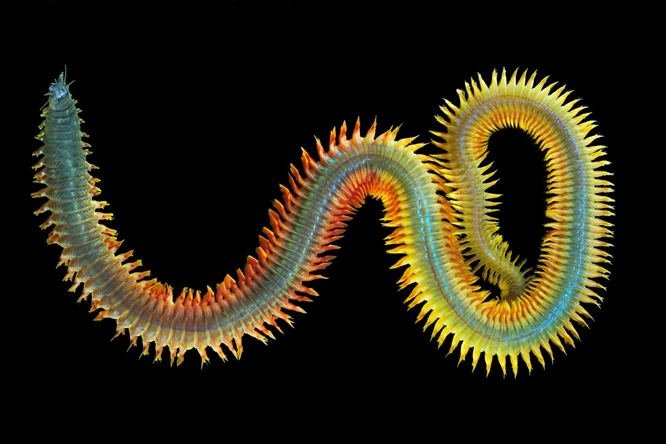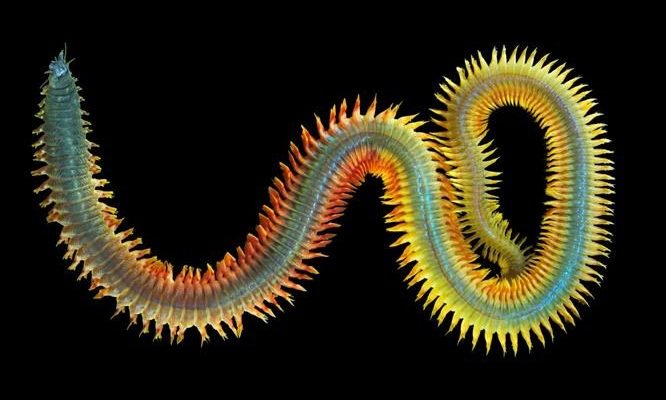
Marine polychaetes are more than just underwater worms; they’re essential players in their habitats. They help break down organic material, aerate the ocean floor, and serve as food for various marine animals. With over 10,000 species, they come in a wide array of colors, shapes, and sizes. This diversity can make identifying them a challenge, especially for beginners. But don’t worry—I’ll walk you through the process step by step, helping you understand what to look for when you’re out exploring.
What Are Marine Polychaetes?
Before we dive into the identification process, let’s get a clear picture of what marine polychaetes actually are. These worms belong to the class Polychaeta within the phylum Annelida. The term *polychaete* comes from the Greek words “poly,” meaning many, and “chaeta,” meaning bristles. So, you could say they’re the “bristly worms” of the ocean world.
Polychaetes are typically characterized by their body structure: they have a segmented body and are equipped with parapodia—small, paddle-like structures that help them move. Think of parapodia as tiny oars that allow these worms to paddle through the sediment or swim gracefully through the water. Some polychaetes are free-swimming, while others are burrowers, living in tubes they construct from sand or mud. Each type of habitat comes with unique adaptations, making them incredibly diverse and interesting to study.
Where to Look for Marine Polychaetes
Now that you know what marine polychaetes are, the next step is figuring out where to find them. These creatures can be spotted in various marine environments, from sandy shorelines to rocky tide pools. One of the best places to start is at low tide, when the tide recedes and exposes the ocean floor.
When you’re out searching, keep an eye on the sediment. Polychaetes often thrive in areas with rich organic matter. Look for:
- Sandy or muddy substrates where they can burrow.
- Seagrass beds, which provide both shelter and food.
- Rocky areas where they can cling onto surfaces.
You might want to bring along a small shovel or spoon for digging carefully into the sand. Remember to be gentle, as these worms can be fragile. It’s like searching for buried treasure—taking the time to uncover them reveals the bounty of life hidden beneath the surface.
Identifying Features of Marine Polychaetes
Once you’ve found a potential polychaete, how do you identify which kind it is? There are several key features to check out. First, notice the color and size. Polychaetes can vary greatly—from a few centimeters long to up to a meter in some species. Their colors can range from earthy browns and greens to bright oranges and reds, providing a visual feast for the eyes.
Next, examine the body segments. Polychaetes typically have numerous segments, and you’ll often see them marked by distinct rings. Count how many segments there are and note their appearance. Are they smooth or covered in bristles? This can give you clues about the specific species you’re observing.
Don’t forget to look closely at the head region. Some polychaetes have prominent antennae or tentacle-like structures that help them sense their environment. These appendages can vary in size and number. It’s like a worm’s version of a fancy hat—each one unique to its species!
Common Types of Marine Polychaetes
Getting familiar with a few common types of marine polychaetes can make your identifying journey even more enjoyable. Here are a few you’re likely to encounter:
1. Nereis virens (Ragworm)
This popular bait worm is often found in sandy and muddy environments. They can be greenish or brown and are characterized by their long, tapered bodies and prominent parapodia. They’re excellent for fishing but are also interesting to observe as they wriggle through the sand.
2. Arenicola marina (Lugworm)
Lugworms are typically found in sandy beaches and are known for their U-shaped burrows. With a thick, segmented body, they often appear in a light pink or beige color. The burrows they create are a hallmark of their presence.
3. Sabella spallanzanii (Mediterranean Feather Duster Worm)
This beautiful polychaete has a long, slender body with a spiraled crown of colorful tentacles that resemble a feather duster. They often attach themselves to rocks or man-made structures in coastal waters but can be tricky to spot due to their camouflage.
Tips for Observing Marine Polychaetes
Now that you know what to look for, let’s talk about how to effectively observe these fascinating creatures in their natural habitat. First off, patience is key. Spend some time just watching. Polychaetes may take a moment to emerge from their burrows or stop wiggling once you find them.
Here are some practical tips for a successful observation:
- Use a field guide: A good marine life field guide can help you with identification based on visual cues.
- Take photos: Snap pictures from different angles to compare later. It’ll help you remember details you might forget after leaving the site.
- Avoid disturbing the habitat: When digging, be mindful not to disrupt too much of the surrounding area. Respecting their environment keeps these unique creatures safe and thriving.
It’s a bit like trying to catch a glimpse of a rare bird. The more you learn and observe, the more you’ll appreciate these hidden gems beneath the waves.
Why Identifying Marine Polychaetes Matters
You might be wondering, “Why go through all this trouble to identify marine polychaetes?” Understanding and identifying these organisms play a crucial role in marine ecology. They contribute to nutrient cycling, help maintain sediment structure, and provide essential food sources for various marine animals.
Additionally, they can serve as indicators of environmental health. If polychaete populations are thriving, it often suggests a healthy ecosystem. Conversely, a decline in their numbers can point to pollution or habitat degradation. By taking the time to learn about these worms, you’re not just expanding your knowledge—you’re also contributing to conservation efforts.
Moreover, spending time observing marine life fosters a deeper connection to nature. It encourages mindfulness and appreciation for the ecosystems that support so much life.
Identifying marine polychaetes in their natural habitat can be an exciting adventure. It requires curiosity, patience, and a willingness to explore. As you walk along the shore, remember to look closely at the sand, rocks, and water—you never know what kind of fascinating creature you might find.
With the tips and insights shared in this guide, you’ll be well on your way to becoming a polychaete pro. So grab your shovel, a field guide, and head out to the beach. Your treasure hunt awaits, and the ocean is full of incredible surprises just waiting for you to discover!

